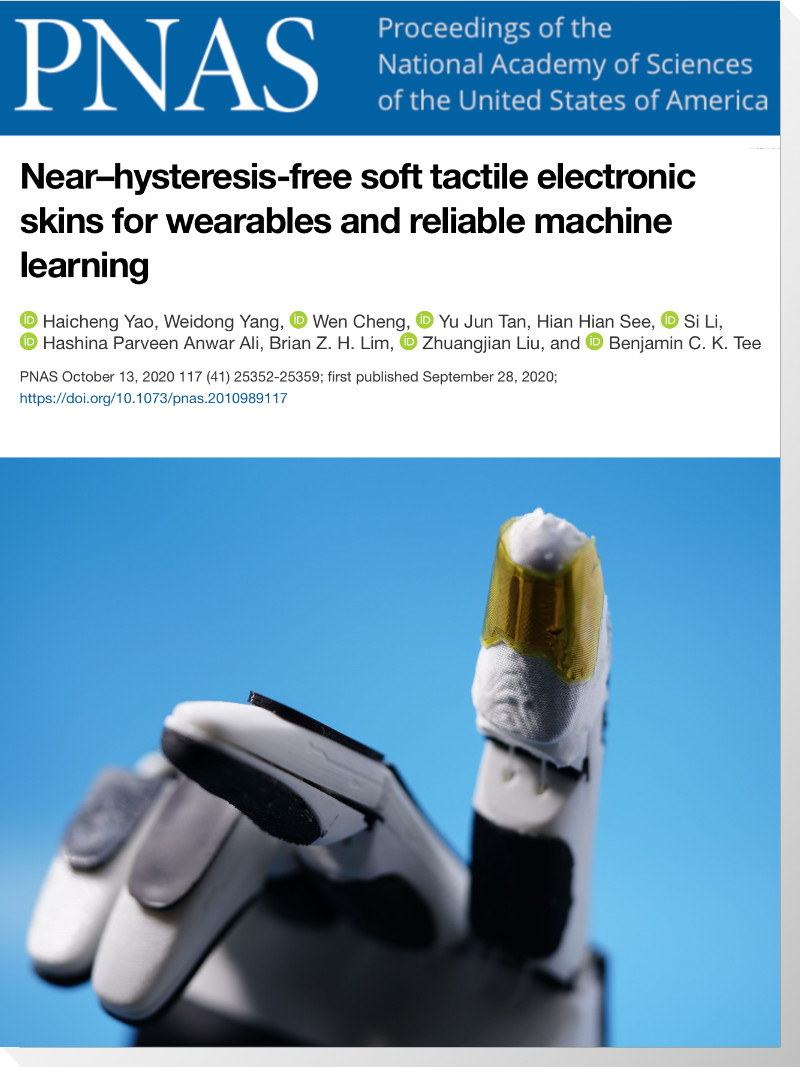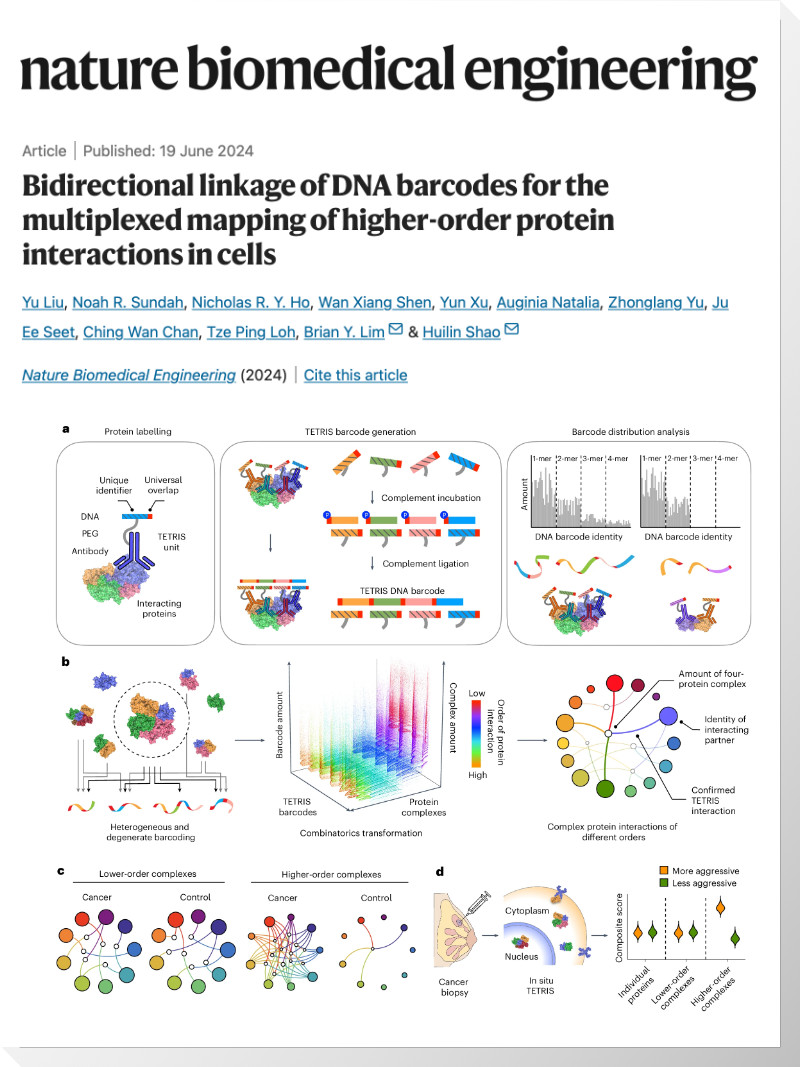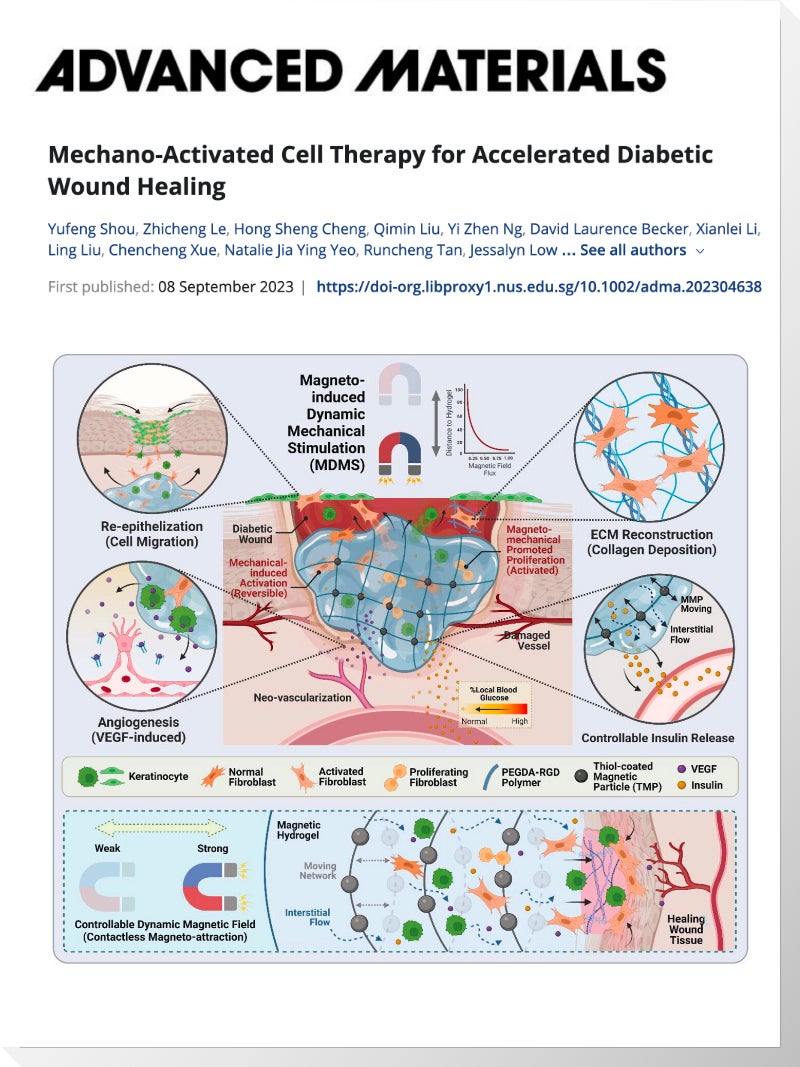Near–hysteresis-free soft tactile electronic skins for wearables…
- October 13, 2020

Near–hysteresis-free soft tactile electronic skins for wearables and reliable machine learning
, , , , , , , , , and
Abstract
Electronic skins are essential for real-time health monitoring and tactile perception in robots. Although the use of soft elastomers and microstructures have improved the sensitivity and pressure-sensing range of tactile sensors, the intrinsic viscoelasticity of soft polymeric materials remains a long-standing challenge resulting in cyclic hysteresis. This causes sensor data variations between contact events that negatively impact the accuracy and reliability. Here, we introduce the Tactile Resistive Annularly Cracked E-Skin (TRACE) sensor to address the inherent trade-off between sensitivity and hysteresis in tactile sensors when using soft materials. We discovered that piezoresistive sensors made using an array of three-dimensional (3D) metallic annular cracks on polymeric microstructures possess high sensitivities (> 107 Ω ⋅ kPa−1), low hysteresis (2.99 ± 1.37%) over a wide pressure range (0–20 kPa), and fast response (400 Hz). We demonstrate that TRACE sensors can accurately detect and measure the pulse wave velocity (PWV) when skin mounted. Moreover, we show that these tactile sensors when arrayed enabled fast reliable one-touch surface texture classification with neuromorphic encoding and deep learning algorithms.
Please click HERE for the research article.






